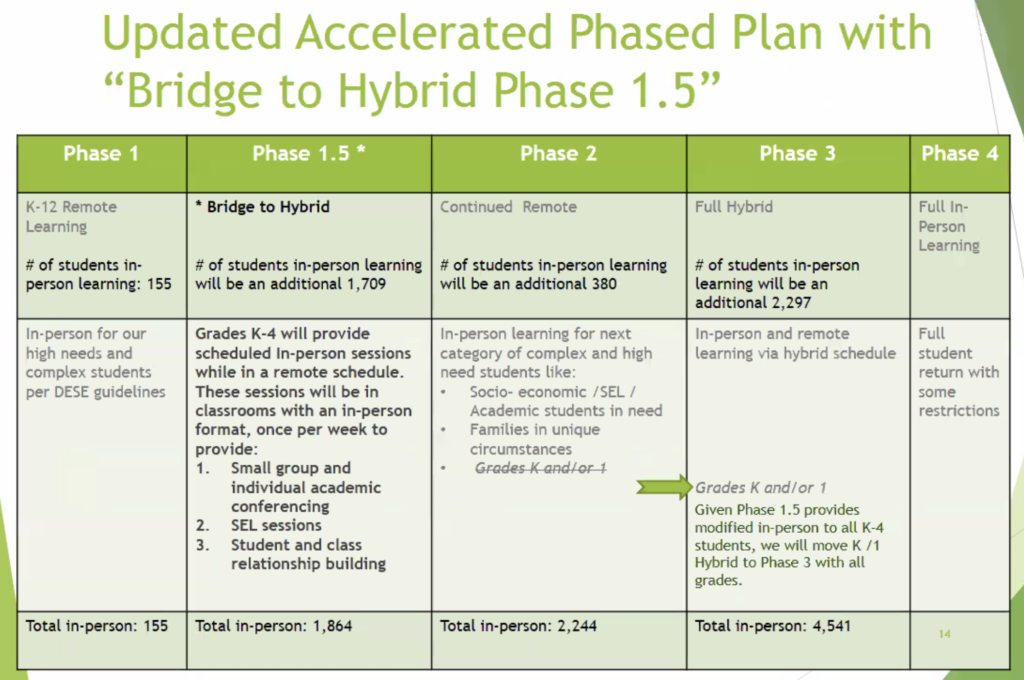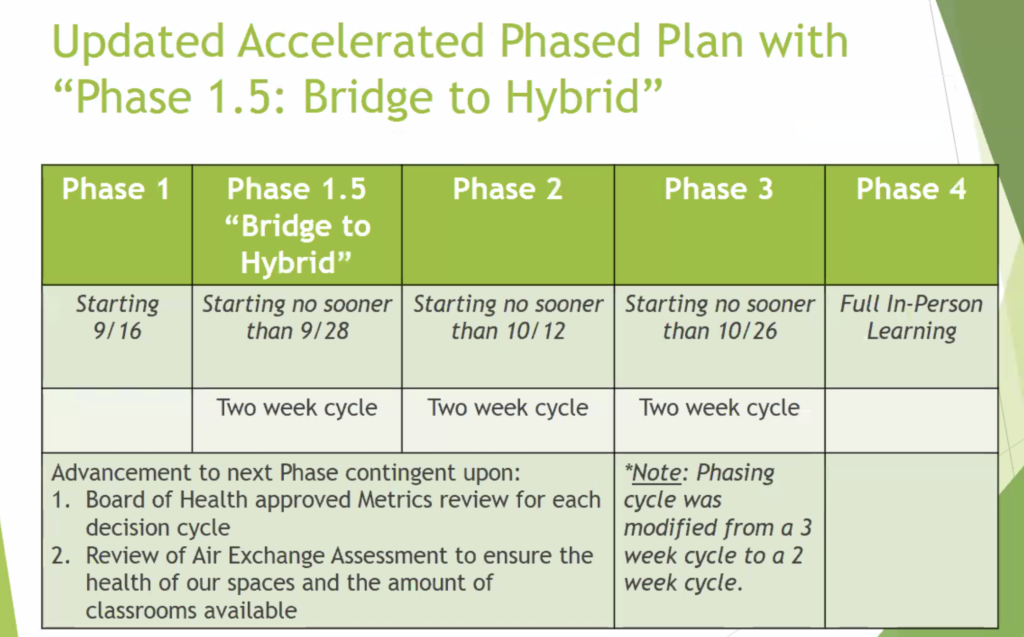Dustin O’Brien, the food service director for the Belmont Public Schools, announced on Tuesday, Sept. 22 that the US DA has extended a waiver that allows schools to serve free breakfast and lunch to ALL students, as late as Dec. 31, 2020 or as long as funding is available.
“We are thrilled with this news as it means that we will be able to provide all Belmont students with nutritious and nourishing food for free that will support them, both in school and at home,” said O’Brien.
What this means for your family and for Belmont Public Schools?
- Your children, from birth to 21, will receive a healthy breakfast and lunch to cover the week, at no cost.
- This allows Belmont to provide the most nourishing and appetizing meals possible for your children. When your children eat school meals, it helps the school system by providing federal funds to the district. The more meals we serve, the more funding we receive, allowing us to focus on meal quality, variety and innovative practices (new recipes, frozen take home meals, etc.). If your children have never before participated in school meals, consider trying the program this year!
- It helps you save time and money. By allowing us to prepare meals for your children you don’t have to plan and shop for your children’s breakfast and lunch each school day.
Here are the multiple methods in which meals will be available.
OPTION ONE: WEDNESDAY MEAL PICK UP
You may pick up meals for your children who are remote learners at the designated school below. Each meal kit will have a total of 7 breakfast and 7 lunch meals. You will need to provide your student’s name/s for record keeping purposes.
DATE/TIME: Every Wednesday from 7:30 a.m. to 9:30 a.m.
LOCATION: Belmont High School (Loading Dock), 221 Concord Ave.
OPTION TWO: HOME DELIVERED MEALS
FREE AND REDUCED MEAL BENEFITS: Starting this week, meal kits will be delivered Monday through Friday between the hours of 9AM to 3PM. This will be a no-contact delivery where we will ring the doorbell or callbox to let you know meals have arrived. Once you receive your first delivery (ex. Tuesday), that will be delivery day each week (pending no holidays).
You are welcome to opt out of this service by emailing Assistant Food Service Director, Gail Mulani, at gmualni@belmont.k12.ma.us . Please include the names of your student/s and home address.
FULL PAID: For families not receiving free or reduced meal benefits but would like to take part in the weekly meal kits, we encourage you to utilize the Wednesday meal pick up.
If you cannot attend the meal pick up hours, you can request a weekly meal delivery by filling out this survey. Surveys will be reviewed on a weekly basis and delivery lists will be adjusted. Please note we will do our best to accommodate all requests.
NON-BELMONT RESIDENTS: If you are currently receiving meals delivered to your home from Belmont Food Service, this will continue through remote learning and will be reassessed at the next phase.
If you cannot attend the meal pick up hours, you can request a weekly meal delivery by filling out this survey. Surveys will be reviewed on a weekly basis and delivery lists will be adjusted. Please note we will do our best to accommodate all requests.
Please visit this website for emergency meal sites around Boston and/or contact the Project Bread FoodSource Hotline at 1-800-645-8333.
OPTION THREE: STUDENTS AT SCHOOL
If you have students in school, both breakfast and lunch will be offered to them during the school day. Each building is accommodating seating inside and outside (breakfast and lunch) of the building to ensure social distancing is maintained while masks are removed. Menu options will vary in each building.
LABBB Students: As students are not eating lunch on site, please touch base with your building coordinator if interested in grab n’ go lunches to be sent home with your child daily.
FREE AND REDUCED MEAL APPLICATIONS (ONLINE)
The Massachusetts Department of Elementary and Secondary Education have requested that the USDA extend free meals for all students for the entire school year. However, as of now, the USDA has only allowed this as late as December 31, 2020 or as long as funding is available. Therefore, families should still submit a household application to determine eligibility for free and reduced price school meals. This will also allow students to qualify for any additional benefits and ensure a seamless transition when schools move back to a paid program (if the waiver is not extended for January to June 2021). The free and reduced meal application is available for submission at this link; Free and Reduced Meal Application Form
Please reach out with any questions you might have. Your children are the reason we do our jobs and we are here to make sure that they are fueled with good food!

